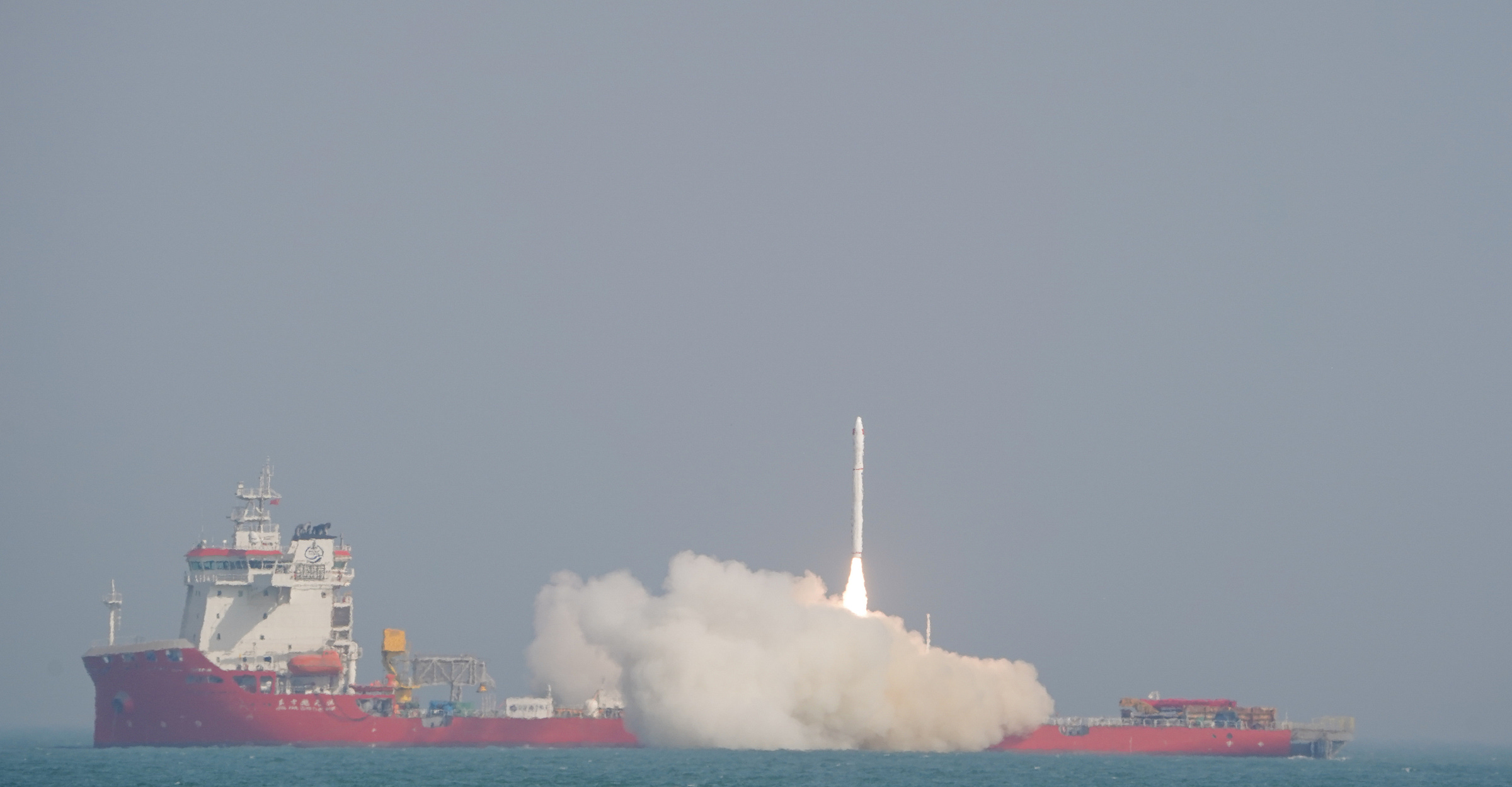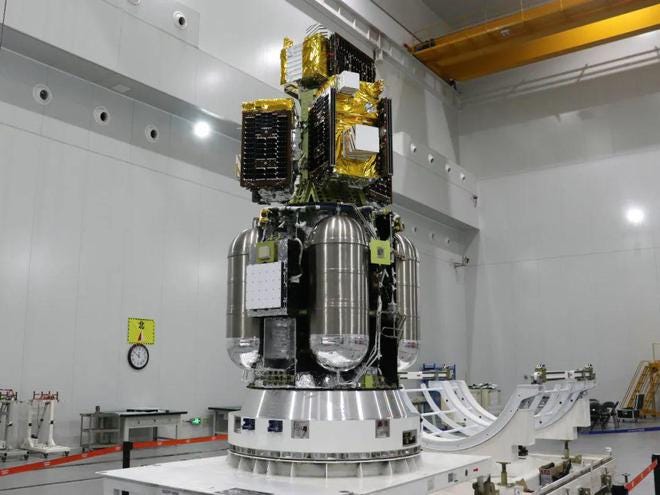Another Solid at Sea to Space [Ceres-1S Y5]
Guodian Gaoke’s constellation is nearing completion of its first phase.
From the calm shores of the Yellow Sea off the coast of Rizhao (日照市), Galactic Energy’s Ceres-1S lifted off from a sea-launch platform on May 19th at 15:38 pm China Standard Time (07:38 Universal Coordinated Time) heading to a 850-kilometer 45-degree inclination low Earth orbit. Atop of the rocket were four satellites for a repeat customer.
On top of Ceres-1S for today’s launch were four Tianqi (天启) Internet-of-Things satellites from Guodian Gaoke (国电高科). These four satellites were numbered 34, 35, 36, and 37 for launch order (actually believed to be 16, 17, 18, 20) as part of the company’s constellation, with up to 3,918 spacecraft proposed to eventually reach orbit for the constellation through three phases. Phase one is to have thirty-seven out of thirty-eight planned spacecraft in orbit as of today’s Ceres-1S.
This was Guodian Gaoke’s sixth launch with Galactic Energy for the Tianqi constellation, having also launched on the rocket’s previous sea launch, also to an 850-kilometer 45-degree inclination. As such, Ceres-1 vehicles have lofted eighteen satellites into orbit for Guodian Gaoke.
The Tianqi constellation currently provides regular services for use in various industries, including forestry, agriculture, aquaculture, petroleum, emergency response, ecological environment conservation, and smart city development. As more satellites are launched, the constellation will also provide enhanced connectivity services to assist with vehicle automation and communications.
In their post-launch blog post, Galactic Energy stated it dedicated today’s mission to the women working at the company and in the space sector. The company went on to state:
“In the flourishing development of the commercial space industry, female scientists and engineers have always been an indispensable "stellar force." From overall rocket design to the commissioning of offshore launch platforms, from satellite payload testing to orbital data analysis, the women at Galactic Energy Aerospace bring professionalism, resilience, and innovation, writing a remarkable chapter in space exploration.”
“On this occasion, Galactic Energy, together with New in Space (太空上新) and Whisper (护舒宝)1, has launched the public welfare initiative "Her Power: Safeguarding the Stars" to honor every woman who quietly dedicates herself to the aerospace industry. The three parties will continue to support the growth and development of female talent in science and technology, offering all-round support to the "her power" in aerospace, and empowering more women to break boundaries and shine brightly in the vast universe.”
If there are any problems with this translation please reach out and correct me.
Additionally, Galactic Energy said they have now launched eighty-one satellites across nineteen launches.
Today’s launch was the 5th mission for Ceres-1S, and the 20th launch for the Ceres-1 launch vehicle series (Ceres-1 and Ceres-1S). This was also the 29th launch from China in 2025.
Liftoff video and live stream via International Rocket Launches on YouTube.
Check out the previous Ceres-1 launch
Back-to-Back Meteorology [Ceres-1 Y17]
This week has seen a second Ceres-1 lifting off from the Jiuquan Satellite Launch Center’s Launch Area 95A at 19:07 pm China Standard Time, or 11:07 am Universal Coordinated Time, on March 21st. Today’s mission had a handful of satellites for a repeat c…
What is Ceres-1/1S?
This section is for those less familiar with China's commercial launch vehicles.
Galactic Energy’s Ceres-1, and its sea launch version Ceres-1S, is a four-stage launch vehicle that burns solid fuel in the first three stages, and a storable propellant in the fourth-stage. The fourth-stage can also be replaced with the company’s Eros orbital test platform.
The payload capacity of the launch vehicle is currently as follows:
420 kilograms to low Earth orbit
300 kilograms to a 500-kilometer sun-synchronous orbit
270 kilograms to a 700-kilometer sun-synchronous orbit
The first-stage is powered by a solid rocket motor that burns an undisclosed solid propellant to produce 60 tons of thrust. The second-stage also burns an undisclosed solid propellant to produce 28 tons of thrust. The third-stage is the final solid rocket stage, once again burning an undisclosed solid propellant, producing 8.8 tons of thrust. The fourth-stage burns a storable liquid Monomethylhydrazine and mixed oxides of nitrogen fuel in an ‘attitude control thruster’ to generate 1 ton of thrust.
On the launchpad, Ceres-1 weighs 33,000 kilograms and stands 20 meters tall. The first, second, and third stage have a diameter of 1.4 meters while the fairing has a diameter of 1.6 meters.
So far Ceres-1 vehicles have flown from the Jiuquan Satellite Launch Center and various sea-based launch platforms.
Whisper is the Asian brand for Procter & Gamble’s sanitary sub-brand Always.






![Back-to-Back Meteorology [Ceres-1 Y17]](https://substackcdn.com/image/fetch/$s_!hhYv!,w_1300,h_650,c_fill,f_auto,q_auto:good,fl_progressive:steep,g_auto/https%3A%2F%2Fsubstack-post-media.s3.amazonaws.com%2Fpublic%2Fimages%2F442cf0e5-0ed1-4c69-8071-3f5b0b1a47da_3950x2620.jpeg)
